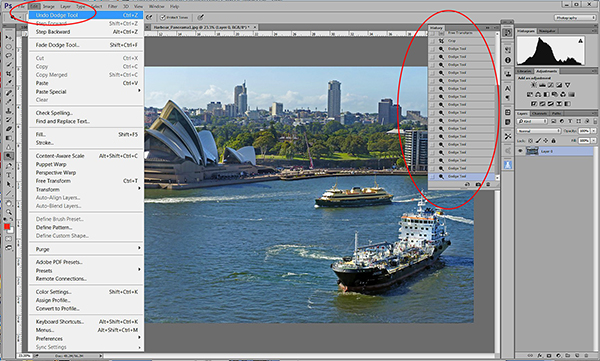How the sensor in your camera influences the images it produces…

Photo Review tips section

How the sensor in your camera influences the images it produces…

Retouching tools are provided in all editing software, although entry-level applications may provide few of them and offer limited scope for adjusting them. Most applications apply adjustments with ‘brushes’ that can be adjusted with sliders, usually in a pop-up dialog box that resembles the screen grab below. Brushes can also be set via a dropdown menu in either the menu bar or the toolbox.

Adjustment layers are among the most useful editing functions, partly because they enable you to edit non-destructively but also because you can use the Layers function to select part of an image and work on it without affecting the remainder of the image. The best way to visualise layers is as transparent overlays upon which specific effects are applied.

You can calculate the scanning resolution you require by measuring the original picture. Because resolution is normally expressed in inches, calculations are easiest when the dimensions of the original are in inches as well.

Most recent cameras include integrated Wi-Fi, which enables them to send images – and often movie clips – to smart-phones and tablets or upload them to devices connected to a wireless network. With the majority of people carrying a smart device these days, Wi-Fi is the logical choice for a camera that needs to communicate with the rest of the world.

Less can be more when you want to create different looking images.A basic tenet of photographic composition urges photographers to fill the frame with the subject. While this strategy works well most of the time, there are situations when a minimalist approach can give a refreshing new slant to your creative vision.

Great travel photos tell a story by opening our minds to interpretation and allowing us a glimpse into the lives of others. By considering each image as an individual story we can transform visually stimulating locations, landmarks or scenes into visual drama and a more intense experience for the viewer.

Reflections – whether wildly distorted or perfectly rendered – are a lot of fun to explore.

To ensure the right colours in your images, it helps to understand how colour spaces work… Colour spaces are mathematical models describing the way colours can be represented. The easiest way of visualising them is to think of a box containing all the possible colours that can be produced by mixing the three primary colours of light: red, green and blue.

Although the basic image editor in a computer’s operating system may be adequate for snapshooters, serious photographers require a dedicated editing program. Adobe’s Photoshop is often the first program people think of, however there are lower cost and free alternatives for both photo editing software and workflow applications.
Ads can be a pain, but they are our only way to maintain the server. Please deactive Ads blocker to read the content. Your co-operation is highly appreciated and we hope our service can be worth it.